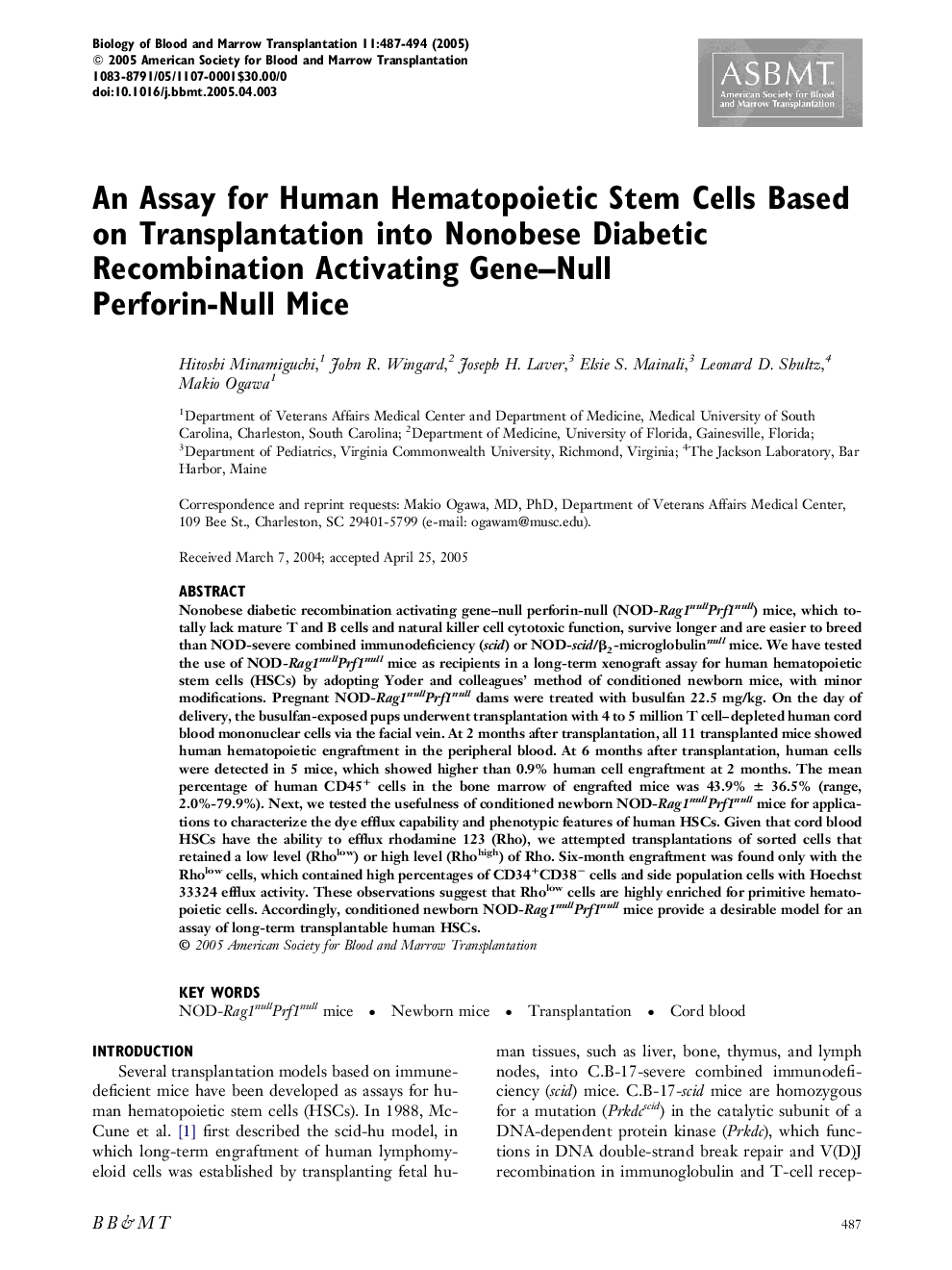| Article ID | Journal | Published Year | Pages | File Type |
|---|---|---|---|---|
| 9904190 | Biology of Blood and Marrow Transplantation | 2005 | 8 Pages |
Abstract
Nonobese diabetic recombination activating gene-null perforin-null (NOD-Rag1nullPrf1null) mice, which totally lack mature T and B cells and natural killer cell cytotoxic function, survive longer and are easier to breed than NOD-severe combined immunodeficiency (scid) or NOD-scid/β2-microglobulinnull mice. We have tested the use of NOD-Rag1nullPrf1null mice as recipients in a long-term xenograft assay for human hematopoietic stem cells (HSCs) by adopting Yoder and colleagues' method of conditioned newborn mice, with minor modifications. Pregnant NOD-Rag1nullPrf1null dams were treated with busulfan 22.5 mg/kg. On the day of delivery, the busulfan-exposed pups underwent transplantation with 4 to 5 million T cell-depleted human cord blood mononuclear cells via the facial vein. At 2 months after transplantation, all 11 transplanted mice showed human hematopoietic engraftment in the peripheral blood. At 6 months after transplantation, human cells were detected in 5 mice, which showed higher than 0.9% human cell engraftment at 2 months. The mean percentage of human CD45+ cells in the bone marrow of engrafted mice was 43.9% ± 36.5% (range, 2.0%-79.9%). Next, we tested the usefulness of conditioned newborn NOD-Rag1nullPrf1null mice for applications to characterize the dye efflux capability and phenotypic features of human HSCs. Given that cord blood HSCs have the ability to efflux rhodamine 123 (Rho), we attempted transplantations of sorted cells that retained a low level (Rholow) or high level (Rhohigh) of Rho. Six-month engraftment was found only with the Rholow cells, which contained high percentages of CD34+CD38â cells and side population cells with Hoechst 33324 efflux activity. These observations suggest that Rholow cells are highly enriched for primitive hematopoietic cells. Accordingly, conditioned newborn NOD-Rag1nullPrf1null mice provide a desirable model for an assay of long-term transplantable human HSCs.
Related Topics
Life Sciences
Biochemistry, Genetics and Molecular Biology
Cancer Research
Authors
Hitoshi Minamiguchi, John R. Wingard, Joseph H. Laver, Elsie S. Mainali, Leonard D. Shultz, Makio Ogawa,
